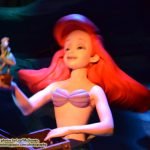Mermaids and Mermen
A rich realm of characters in Faerie lore, Mermaids, and Mermen have consumed popular myth through the ages – fantasy, entertainment, and imagery. Mermaids (and the male form “Mermen”) are a race of Faerie that consist of human-like mythological aquatic creatures that are depicted with a human head and torso attached to the tail of a fish. They are related to sirens, selkies, and sea nymphs.
Their names come from the Old English root “Mere” for “Sea”, and “maid” for “woman”. Caribbean tales of mermaids appear as the Aycayia – with attributes similar to the Goddess Jagua and the hibiscus flower of the majagua tree. Voodoo lore speaks of the Lwa La Sirene who is lwa of wealth and beauty and the Orisha Yemaya. Other names are “Mami Wata” (Africa), “Jengu” (Cameroon), “Merrow” (Ireland/Scotland), “Rusalkas” (Russia/Ukraine), “Iara” (Brazil), “Oceanids, Nereids, Naiads” (Greek), “Sirena or Siyokoy” (Philippines). In folktales, mermaids were similar to sirens in that they often sang to enchant passersby, distracting them, and causing them to walk off the deck of their ships and ground their ships.
Some horror tales depict mermaids squeezing the life out of drowning men or carrying them down to their underwater realms thereby drowning the men by either not realizing humans can’t breathe water or to drown them out of spite. The first mention in the lore of Mermaids appeared around 1,000 B.C.E. in Assyria with the story of the Goddess Atargatis who accidentally killed her shepherd lover. To bring him back she jumped into a lake and transformed into a fish, but the waters wouldn’t conceal her divine beauty, thereby forcing her into the form of a ‘mermaid’ – human above the waist, fish below the waist. Around 546 B.C.E. the Milesian philosopher Anaximander stated that mankind came from an aquatic species and thereby from mer-folk.
Greek legend places Alexander the Great’s sister Thessalonike as a mermaid upon her death. 2nd century C.E. Lucian of Samosata wrote about mermaids in the Syrian temples – notably Derketo and Hera Atargatis. Many Arabian Nights tales talk of Sea People such as Djullanar the sea-Girl or Abdullah the Merman who can breathe water, interbreed with humans, and create aquatic half-breeds. In the British Isles and Ireland, there are many tales of Mermaids and Mermen in local lore and legend – mainly from Fishermen (1800’s). Seeing them were considered an unlucky omen – foretelling disaster or provoking it. Some were described as monsters as large as 2,000 feet in size. It is believed that Mermaids can swim up rivers to freshwater lakes and that they often appear as drowned victims when presenting themselves to humans they are attracted to.
Some lore portrays mer-folk as helpful, teaching humankind cures for diseases. Claims of sightings range from British Columbia to Ireland to Java. In the 19th century, P.T. Barnum displayed in his taxidermy exhibit the “Fiji Mermaid” which was proven to be a hoax. There is a rare congenital disorder called the “Mermaid Syndrome” where a child is born with his/her legs fused together combined with reduced genitalia that occurs as often as conjoined twins (1 out of 100,000 births and usually fatal due to kidney and bladder complications).
Related to Naiads and Undines.
More information:
Mermaids on the web: http://www.isidore-of-seville.com/mermaids/
Women of the Deep: A Light History of the Mermaid: http://members.cox.net/mermaid31/merhist.htm
Habitats: Mermaid Cove at Carrick-A-Rede in Antrim, Northern Ireland:
|
Mermaid Cove |
Disney’s Animated Classic: The Little Mermaid
Throughout film and cartoons, the mythos of the mermaid has enchanted us all, including the popular character “Arial”, aka “The Little Mermaid”.









